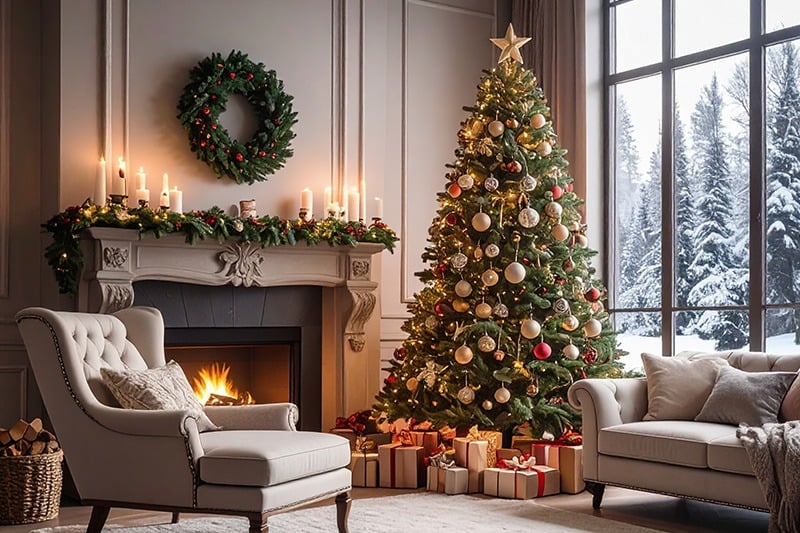Meghan is a birth doula, postpartum doula, herbalist and breathwork teacher who is passionate about supporting the transition into motherhood. She lives with her husband in Boulder, Colorado and offers virtual doula support for expecting parents anywhere in the world. For more about her services and blog posts about all things holistic birth- visit her website www.birthandbeing.com.
If there is one thing I recommend to all my clients, no matter what kind of birth they are planning, it’s learning to improve the mind/body connection. Adding little rituals into your day, as well as meditation or breathwork are incredible tools for this. And a quality yoga class will combine these with gentle stretching and exercise as well. This is what makes prenatal yoga a must-do for moms to be when it comes to improving their well being during pregnancy.
What is Prenatal Yoga
Yoga asana, or the physical side of yoga, was originally designed for teen boys in India who were learning how to create calm minds and healthy bodies for the purpose of meditation. And it works. That’s why here in the Western world it has become a hugely popular workout for both the mind and the body.
But just like some poses like shoulder stands, headstands and other inversions are discouraged for women during menstruation, yoga during during pregnancy should also be modified to accommodate a growing belly. So what differences are there between standard yoga and prenatal yoga? Prenatal yoga uses specific postures that are safe for pregnancy and encourage gentle opening of the hips, while also focusing on the pelvic floor.
TRUTH BOMB:
You’re
Already killing it!
If You Were More Consistent With Your Wellness Routine, You’d Be Unstoppable.
Besides the physical side of things, pregnancy can be a really vulnerable and emotional time, and a normal yoga class doesn’t necessarily make space for this. Being around a group of other soon to be moms with an instructor who is familiar with the physical and emotional changes of pregnancy can be very healing and empowering.
A good prenatal yoga class will also focus on the birthing process and helping women prepare their minds and bodies for a more easeful labor. They do this using visualization, mantras and breathing exercises you can use in birth.
So what happens in a prenatal yoga class?
Gentle Breathwork and Warm Up
Often teachers will pick a theme or focus for the class, which will start with everyone sitting quietly as the instructor introduces this and encourages some gentle warm-up movements or breathing exercises. This helps you to get into your body and the present moment of being in class.
Physical Postures
Next you will focus on getting into different asanas (physical postures) that encourage your body to open up in different ways. Some classes are more vigorous than others and you may find yourself working up a sweat and getting your heart rate up. This gentle form of exercise is perfect for pregnancy.
Savasana
Savasana is called corpse pose because you lie on your mat, flat on your back with your eyes closed. This is one of the most important parts of a yoga class because it teaches you to release any tension lingering in the body. The focus here is to completely relax.
Meditation and Visualization
Sometimes during savasana the instructor will take you on a guided meditation or visualization to help you relax even more deeply. Sometimes teachers encourage this during asanas when things get a little uncomfortable as well. Visualization can be especially helpful as you get closer to birth, training your mind to accept difficult sensations and connecting you to your body opening as your baby moves through during labor.
So what are some popular types of prenatal yoga? Every prenatal yoga class is different. Some are more about the physical exercise. Others focus on community building with other moms, or meditation and breathwork, or childbirth preparation. That’s why it’s important to do your research and read up on class descriptions. You can also take advantage of the fact that most studios offer discounted trials or first time visits.
Choose your prenatal yoga class in the same way you would choose your doula, find an instructor who meets your needs and makes you feel totally comfortable in her presence!
Prenatal Yoga Benefits
So now that we’ve gone over the in’s and out’s of prenatal yoga, what results should you expect to see from doing prenatal yoga throughout your pregnancy?
Eases Anxiety and Fear
Whether you are having your first baby or your third, it’s always a huge change for your body and your family. Anytime these big transitions happen you’re going to be more vulnerable to stress and worries. And preparing for birth can be scary, whether in a hospital or at home, because there are always unknowns.
This is why cultivating a practice that helps calm your mind and relax your body is important. Prenatal yoga can help ease anxiety during pregnancy because when you focus on your breathing (which all yoga does) it gets your nervous system out of sympathetic mode and into parasympathetic.
Your sympathetic nervous system is all about fight or flight and it runs on adrenaline, cortisol and other stress hormones. This is what gets activated when someone cuts you off on the highway or we are just stressed out running errands in the day to day. Parasympathetic is the rest and digest side of our nervous system and we need this to be activated in order to chill out.
Helps Prepare you for Birth
Learning how to relax and activate that parasympathetic side of your nervous system is especially important during birth because it helps release endorphins and natural pain relieving hormones into the body. Women in labor usually don’t progress very well if they are stressed out, so learning relaxation techniques during pregnancy will make birth move with more ease.
Besides this, many prenatal yoga classes also teach you a bit about the birthing process and what to expect. They may teach you visualizations and mantras to call on during labor, which can be so helpful and empowering.
Builds Awareness of the Pelvic Floor
The pelvic floor is a group of muscles that hold up the uterus, bladder and intestines. They naturally shift and change during pregnancy but sometimes get compromised leading to extra pain and even incontinence either during pregnancy or after birth.
While most people assume a tight pelvic floor is a good thing, what you actually want for a healthy birth and postpartum is a strong pelvic floor that can relax and contract as needed. Some people benefit from working with a pelvic floor physical therapist to accomplish this, but sometimes the postures in prenatal yoga are all it takes to build a strong and flexible pelvic floor.
Helps Improve Muscle Pain
No one is immune to the aches and pains of pregnancy. Everything is changing so fast, and your expanding belly puts extra pressure on the hips and lower back. It’s really common to experience psoas pain, sciatica, or round ligament pain. And unfortunately there isn’t much you can do about this other than massage, prenatal yoga and lots of warm epsom salt baths.
The postures and stretching in prenatal yoga will take some pressure off your joints, help open tight areas and bring strength to others.
Builds Community
The one complaint I hear from most postpartum moms I work with is that they feel isolated. Our culture isn’t very mother and baby friendly, especially if you’re breastfeeding. There is also a lot of healing happening postpartum, which makes being home the best and easiest place to be.
Going to a prenatal yoga class and meeting other pregnant women can help bring you the support you need during this big time. People who aren’t pregnant or weren’t recently pregnant might not get what you’re going through, but the women in your prenatal yoga class will. And who knows? They may end up being the ones to visit you postpartum, drop off meals, and trouble-shoot breastfeeding issues.
Guide to Prenatal Yoga Poses
If you’re curious about prenatal yoga but aren’t up for trying a class just yet, here are a few gentle postures you can try at home.
Cat/ Cow
This is one of those prenatal stretches anyone can do, at any stage during pregnancy, even in labor or when pushing! You start on your hands and knees, just about hip width apart. Arch your back up towards the ceiling like a cat, breathing in, and on the exhale drop it down arching in the other direction. This helps relieve lower back pain and open the pelvis, which is why it’s great for labor.
To make this one of the pregnancy stretches with your partner, ask them to stand behind you with a scarf draped around under your belly and around the hips. Your partner can then gentle pull up on the scarf while you relax deeply in this posture. For more detailed instructions, look at step one on the miles circuit.
Supported Squats
Most of you are familiar with the deep squats in yoga that focus on opening up the hips. This is one of the pregnancy hip stretches that actually requires some support because you don’t want to over do it. Your body produces a hormone called relaxin and you may notice you are much more flexible than usual because this hormone makes your ligaments relax to allow your pelvis to open.
Because of this relaxin hormone, overstretching can cause injury, so try using a yoga block and sitting onto it in a supported squat position with your hips open and your back straight. Sit here as long as you feel comfortable and take some nice, deep breaths!
Knees to Chest
Start by laying on your back and pull your knees up to your chest, around your belly. Keep your hands around your knees and gently pull your legs closer to your body as you breathe. This is one of the great pregnancy stretches for sciatica, releasing tension in your lower back and glutes.
Wide Leg Child’s Pose
With your knees just further apart than hip width, gently lean forward until your belly is on the floor and lift your arms overhead. You can gently rest your forehead on the floor and focus on breathing into your belly as it pushes up against the floor. This is a gentle resting posture that can open your hips and lower back.
Legs Up the Wall
This is a really straight forward posture, and again something everyone can do. Simply lay down on your back with your bottom close to a wall. Lift your legs up over your head at a 90 degree angle and rest them onto the wall. You can stay here for about ten minutes, just breathing and relaxing.
This is one of the best pregnancy stretches for the third trimester, when swollen legs and ankles are really common. When your legs are up the wall, it requires less effort for your heart to move the blood and lymph up your legs and towards your heart because gravity does it instead.
Finding Prenatal Yoga Classes
The best prenatal yoga classes are the ones where you feel totally comfortable with your yoga instructor. Decide which prenatal yoga class is right for you by trying out different options in your area. If your are too busy or getting out of the house three times a week is a huge hassle, there are always online classes.
Online programs work just like regular classes, except often you can stream them whenever you have the time. They usually have discounted or free introductory offers, followed by a membership fee.
So where can you find online prenatal yoga programs? If you want a class here or there for free, youtube is always an option, but the quality can be hit or miss. Gaia.com has memberships offering prenatal yoga, talks and documentaries. Doyogawithme.com is another option with lots of videos to choose from.
Like most things with pregnancy, check with your healthcare provider before adding yoga into your routine. And please avoid classes that are too strenuous like ashtanga, or especially bikram and hot yoga. Since listening to your body is a key part of your yoga practice, stop at any point if you feel uncomfortable or short of breath. Enjoying your prenatal yoga practice is the most important thing so it doesn’t become just another appointment you “have” to do during pregnancy.
So have you tried prenatal yoga? What did you love about it? Do you feel like it really helped you prepare for birth? Leave us a comment and share your experience!









Heya! I’m at work browsing your blog from my new iphone 4!
Just wanted to say I love reading your blog
annd look forward to all your posts! Keep upp the excellent work!
Thanks so much for sharing the love! We’re so glad you’re here!